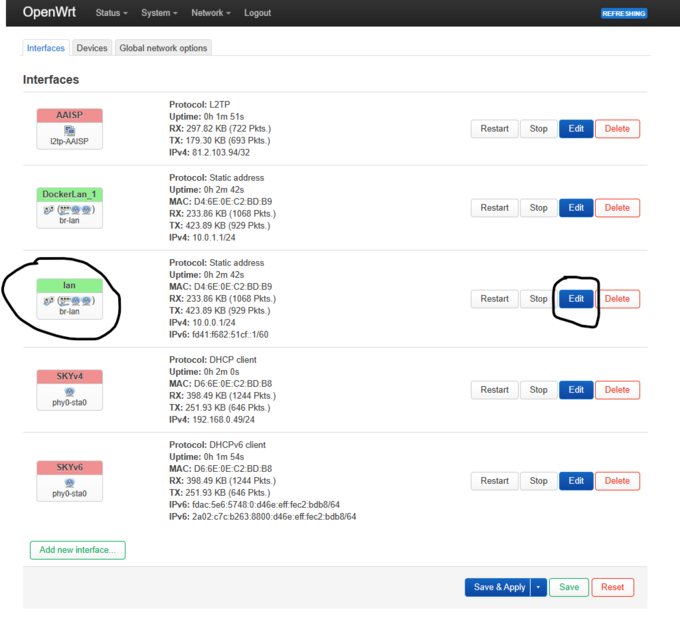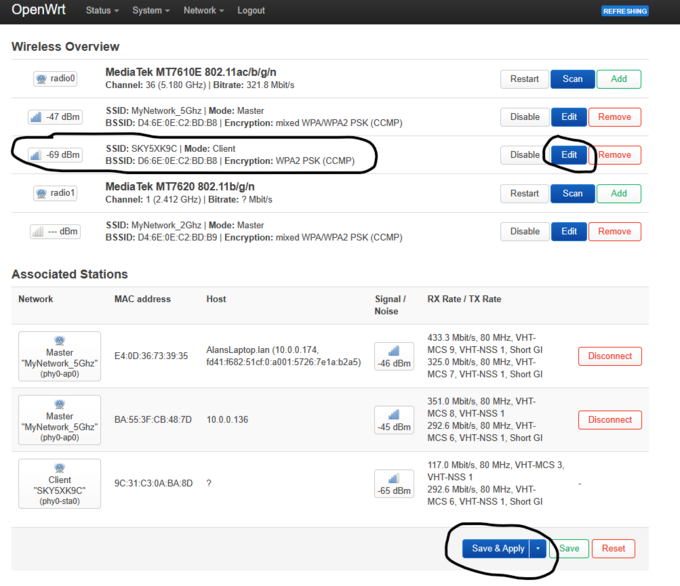L2TP Client: OpenWRT with Policy Based Routing: Difference between revisions
Appearance
Content deleted Content added
No edit summary |
No edit summary |
||
| Line 11: | Line 11: | ||
<br> |
<br> |
||
[[File:WRT001.png|680px]] |
[[File:WRT001.png|680px]] |
||
<br> |
|||
:Click Save & Apply, then disconnect your WLAN connection and rejoin, or refresh IP address. |
|||
<br> |
|||
<br> |
|||
;<big>2 Set up WAN Connection</big> |
|||
:This is depended on your WAN connection; however you will most likely need to connect to it wirelessly in Client mode :like myself, or create a DHCP client on eth0.2 (VLAN 2) interface which should default to untagging VLAN 2 on the WAN :interface. |
|||
:In most situations you should probably enable Masquerading on the WAN interface (default) which is found under Firewall. |
|||
[[File:WRT002.png|680px]] |
|||
Revision as of 13:16, 5 March 2024
This guide was kindly written by Alan T on 04/04/2024
- 1 Configure LAN interface
- Click Add new interface, select Static address then enter
- Device br-lan
- IPv4 address 10.0.0.1 or 192.xxx.x.x
- IPv4 netmask 255.255.255.0
- Firewall Settings lan
- DHCP Sever On
- Click Save & Apply, then disconnect your WLAN connection and rejoin, or refresh IP address.
- 2 Set up WAN Connection
- This is depended on your WAN connection; however you will most likely need to connect to it wirelessly in Client mode :like myself, or create a DHCP client on eth0.2 (VLAN 2) interface which should default to untagging VLAN 2 on the WAN :interface.
- In most situations you should probably enable Masquerading on the WAN interface (default) which is found under Firewall.

